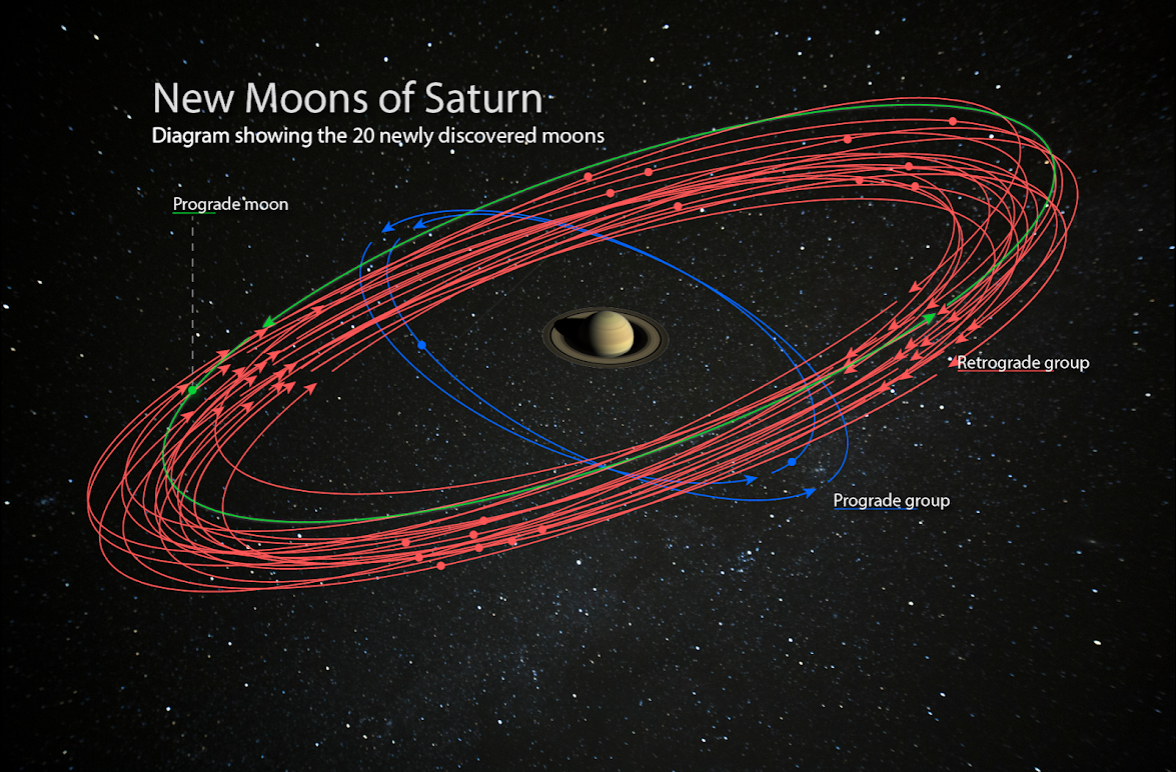What just happened? A team of astronomers led by Scott S. Sheppard of the Carnegie Institution for Science, Washington, discovered 20 new moons around Saturn, the second-largest planet in our Solar System. The announcement was made by the International Astronomical Union's Minor Planet Center on Monday. Sheppard, who discovered 12 new moons of Jupiter last year, held an online contest for naming five of them and is looking to hold one again for the newly discovered Saturn moons.

This week, Jupiter handed over the title of Moon King to Saturn after astronomers found 20 new moons orbiting the latter.
Measuring about three miles (five kilometers) in diameter, 17 of these moons were found to orbit the planet in a retrograde direction (opposite to Saturn's rotation) and 3 in prograde (same direction as Saturn's rotation). Out of these, two prograde moons are said to be closer to Saturn and take nearly two (Earth) years to travel once around it, while the remaining ones take more than three years to complete their orbit around Saturn.
"Studying the orbits of these moons can reveal their origins, as well as information about the conditions surrounding Saturn at the time of its formation," said Sheppard. Some of these moons are part of the Inuit group, named after Inuit mythology, and are believed to be part of a larger moon that disintegrated long ago. Similarly, the newly found retrograde moons, under the Norse group, also seem to be part of a larger Saturnian moon.
"This kind of grouping of outer moons is also seen around Jupiter, indicating violent collisions occurred between moons in the Saturnian system or with outside objects such as passing asteroids or comets," said Sheppard, citing strong frictional interactions between the smaller moons and the gas and dust as the cause behind their spiraling movement towards Saturn.
Sheppard says that during the early days of our Solar System, a rotating disk of gas and dust surrounded the Sun leading to the birth of planets. A similar structure surrounded Saturn during its formation. "The fact that these newly discovered moons were able to continue orbiting Saturn after their parent moons broke apart indicates that these collisions occurred after the planet-formation process was mostly complete and the disks were no longer a factor," noted Sheppard.
Other members of the team include David Jewitt of UCLA and Jan Kleyna of the University of Hawaii, who discovered the new moons using the Subaru telescope at Mauna Kea in Hawaii. "Using some of the largest telescopes in the world, we are now completing the inventory of small moons around the giant planets,” said Sheppard, highlighting their important role in determining the formation and evolution of planets in the Solar System.
"I was so thrilled with the amount of public engagement over the Jupiter moon-naming contest that we’ve decided to do another one to name these newly discovered Saturnian moons," announced Sheppard, adding that this time the moons must be named after giants from Norse, Gallic, or Inuit mythology.
Looks like another God of War playthrough might help with the matter at hand.
Illustration: Carnegie Institution for Science
https://www.techspot.com/news/82241-astronomers-discover-20-new-moons-orbiting-saturn-you.html